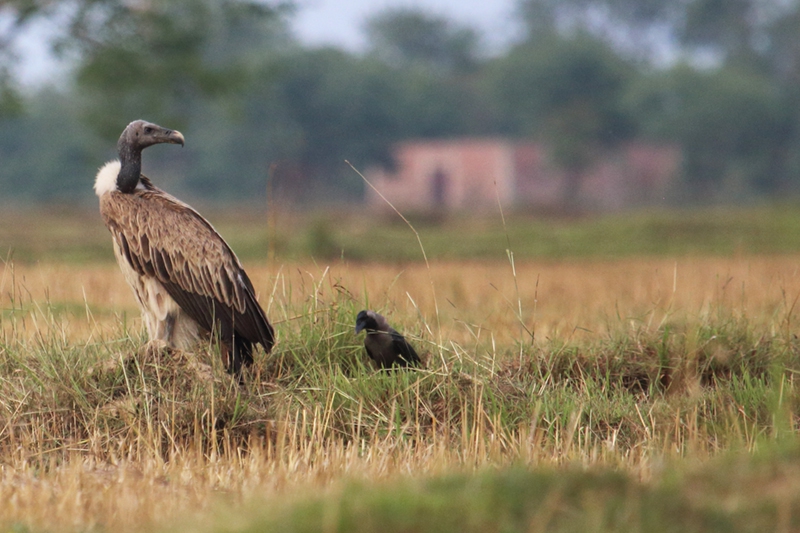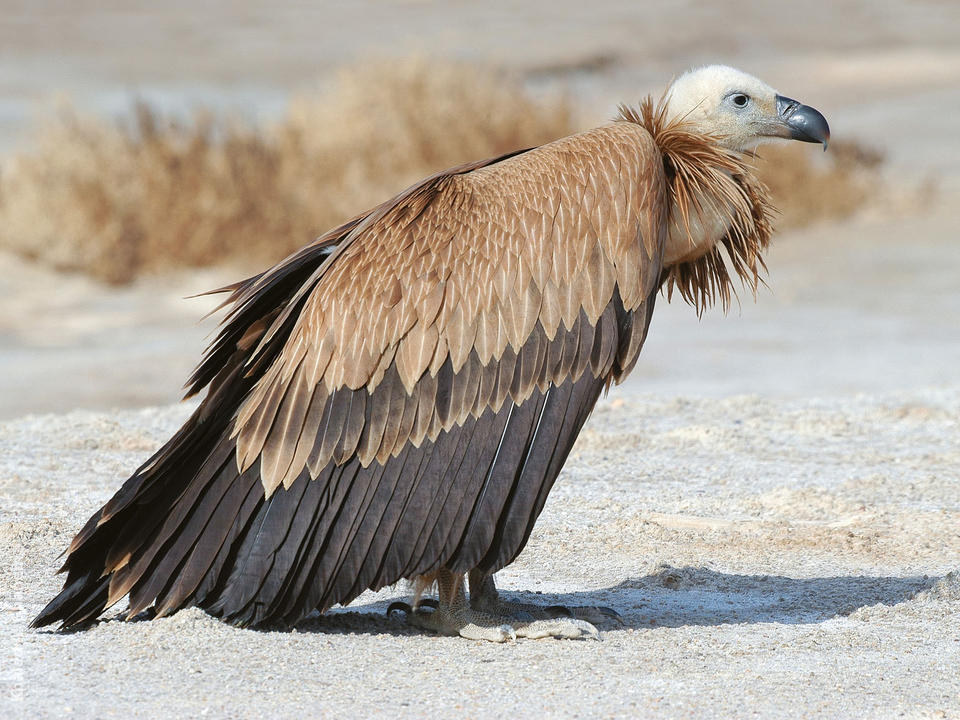Slender-billed Vulture Bird Details
Gyps tenuirostris
Slender-billed Vulture,Indian Slender-billed Vulture;
Patla-chonch Gidh
John Edward Gray (1844)
Accipitriformes (HAWKS, EAGLES and KITES)
Accipitridae
Gyps
Appearance :
Medium to large vulture with a slender, elongated bill. Pale head and neck with a pinkish tinge, while the body is generally dark with light underparts. The slender bill is a key distinguishing feature from other vultures.
Behaviour :
Scavenger, feeding primarily on carcasses of dead animals. Typically seen soaring in thermals in search of food. Social bird, often found in groups around food sources.
Habitat :
Prefers open landscapes, wooded areas, and grasslands. Also found near human habitation, particularly in areas with abundant livestock.
Diet :
Feeds almost exclusively on carrion, mainly from large mammals. Like other vultures, it plays an important role in the ecosystem by cleaning up dead animals.
Conservation Status :
Critically Endangered
Distribution :
Historically found throughout the Indian subcontinent and parts of Southeast Asia. The current distribution is extremely limited due to sharp population declines.
Population Size :
Estimated at fewer than 1,000 mature individuals
Life Span :
Can live up to 30-40 years in the wild under favorable conditions.
Body And Tarsus:
- Body: Medium to large-sized vulture with a relatively slender build. The body is dark greyish-brown, with a paler underbelly and characteristic slender bill.
- Tarsus Length: Approximately 8-10 cm (varies slightly by individual).
Head And Bill :
- Head: Bare head and neck with a pinkish tinge. The head is smaller compared to some other vulture species.
- Bill: Slender, elongated bill well-adapted for tearing into carcasses.
- Bill Length: Bill length is about 6 cm.
Length :
Approximately 80-95 cm from head to tail.
Neck :
The neck is long and bare, facilitating easy feeding from deep carcass wounds without getting feathers dirty.
Size :
Medium to large vulture, similar in size to other Gyps species but with a more slender body.
Tail Details :
- Tail: Rounded and relatively short tail.
- Tail Length: Around 25-30 cm.
- Feathers: Mostly dark brown with lighter patches on the underside. The feathers around the wings and back are broad and dense, giving a streamlined appearance when in flight.
Weight :
Weighs between 5.5 to 6.3 kg.
Wing :
Broad wings adapted for soaring flight, with slightly curved tips
Wing Span :
Around 2.5 to 2.7 meters, enabling it to glide for long distances while searching for food.
Facial Feature :
The face is bare with pale pinkish skin, and the slender bill is the most distinguishing feature of the species. The eyes are sharp, aiding in spotting carrion from great distances.
Nest Details :
- Nest: Large, platform-like nests, usually located high in tall trees or on cliffs. Nests are often reused year after year by the same pair of vultures.
- Nest made up of: Primarily sticks and twigs, with softer materials like grass, leaves, or feathers sometimes lining the inside for the egg.
Breeding Season :
Breeds from November to March.
Nesting Season :
Nest building and egg-laying typically occur between November and February.
Egg Color :
The egg is white or pale bluish-white, occasionally with faint brown or grey markings.
Egg Length :
Approximately 8-8.5 cm.
Egg Width and Weight :
- Egg Width: Around 5-6 cm.
- Egg Weight: Approximately 150-170 grams.
Clutch Size :
Usually one egg per clutch.
No. of Broods :
One brood per year.
Incubation Period :
Roughly 45-50 days.
Nestling Period :
he chick remains in the nest for about 3 to 4 months before fledging.
Vocalization :
Generally silent, but may produce low croaking, hissing, or grunting sounds when near food or during interactions with other vultures.
Sex Demorphism :
Females tend to be slightly larger than males.
Migration Details :
The species is mostly non-migratory, though it may travel locally in search of food.






